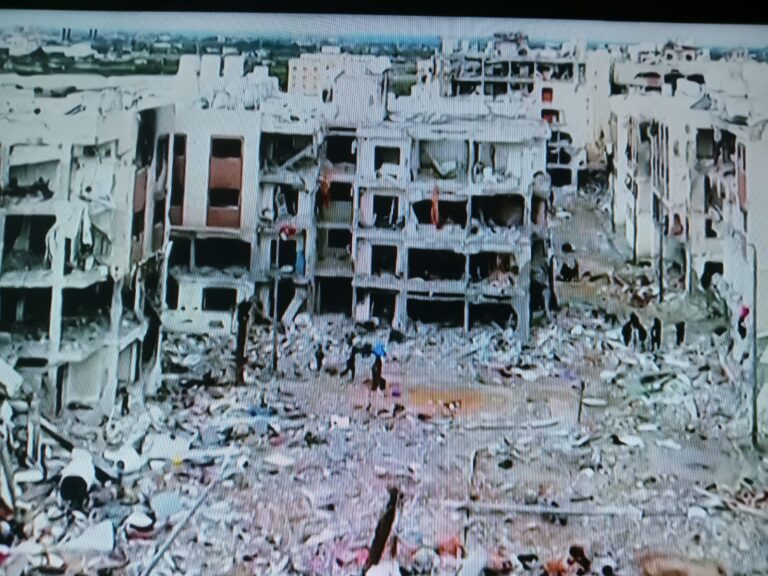
STRATEGIC ASSESSMENT. Russia has been starting their “special military operations in Ukraine” since February 24th, 2022. Both of Russia and Ukraine have launched their gain in this war and both of two countries have made propaganda on social media and mass media according to their efforts during the deadly and unusual conflicts.

Several western pundits have predicted that Russia has gambled “more high cost” occupying Ukraine’s territory or realizing their political efforts which they want to achieve through this conflicts is toppling Ukraine’s Presiden Volodymyr Zelenskyy. Ukraine had predicted that more than 30.000 Russia’s personel killed during the war. Meanwhile, the United Nations has claimed that more than 4.000 civilian had died in Ukraine but the United Nations believed that actually more than 4.000 civilian had died. Ukraine has made propaganda statement that Russia had forced more than 6,6 million Ukraine’s people fled from their lovely country during the war.
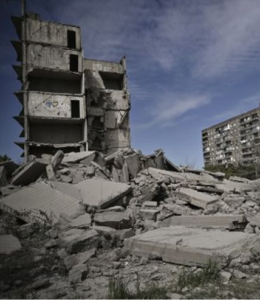
According to Ukraine’s Finance Minister, Serhiy Marchenko, war between Russia vs Ukraine’s have used up more than 8,3 billion US dollar for military war cost and humanitarian assistance. Kyiv School of Economics has reported that more than 100 billion Ukraine’s infrastructure damage, but Ukraine had gave grant from United States and European Union. Forbes magazine has predicted that the cost of Russia’s special military operations in Ukraine including their military equipment damage has reached more than 13 billion US dollar, but this lost has been replacing with Russia’s energy export. George Papakonstantinou, Economic professor from European University Institute said that the cost of war has reached 1 billion US dollar a day.
Meantime, estimates of the number of Russian diplomatic personnel booted from EU and NATO member states range from 120 to nearly 400. Foreign Policy reports that at least 394 officials have been expelled since the February invasion began. Germany alone has expelled 40 members of the Russian delegation, a significant number and a substantial action by a country, like many others, that imports Russian natural gas. The stated reason for these expulsions is to protest Russia’s war in Ukraine, though the expulsions will do little to impact the war.
The expulsions will reduce the sheer size of Russia’s intelligence footprint in European countries, which will have some negative impacts on their collection efforts in the countries in which many of their officers find themselves persona non grata. Intelligence services are bureaucracies like all others, and disruptions in long-established systems and procedures create operational redundancies, inefficiencies, and decreased productivity. It will be disruptive, but it will be temporary, once the Russian intelligence services adjust. There could be some minor impact on Russian embassy support to the technically illegal intelligence officers of the Russian intelligence services abroad those operating without diplomatic posting or protection, declared or undeclared, who do not work out of embassies. This would also be temporary.
Ukraine’s war is actually the reflection of Russia-US and Western countries conflict interest

Russia has been sending reinforcements; some estimates suggest upwards of four thousand additional Russian troops were deployed to the Ukrainian border. In addition to increasing military activity in Ukraine, Russia has recently flown military flights near Alaskan airspace and increased naval activity in the Arctic. There is growing concern in Washington and Brussels that Russian President Vladimir Putin is testing the Biden administration. Chairman of the Joint Chiefs of Staff Mark Milley also spoke last week with Russian General Valery Gerasimov and Ukrainian General Ruslan Khomchak in an effort to gain greater situational awareness, while also urging restraint.
European Union and U.S. sanctions targeting Putin and his inner circle, as well as Russian financial institutions and energy companies, have been ineffectual. Ukrainian President Volodymyr Zelenskiy has called for tougher sanctions against Russia and has also been pushing for Kiev to be invited into NATO’s Membership Action Plan. On the other hand, Russia has warned NATO not to send troops to Ukraine; Kremlin spokesman Dmitry Peskov stated, “There is no doubt such a scenario would lead to a further increase in tensions close to Russia’s borders” which would lead Russia to take “additional measures…to ensure its security.” Secretary of State Antony Blinken spoke to his counterpart in Ukraine, Dmytro Kuleba, and reaffirmed Washington’s commitment to Kiev. Russian Deputy Foreign Minister Sergei Ryabkov stated that Russian and U.S. officials recently met to discuss the renewed fighting and Russian troop movements.
United States European Command (EUCOM) has shifted its readiness posture from “possible crisis” to its highest status “potential imminent crisis” leading many to believe that increased fighting in the coming days and weeks is inevitable. British Prime Minister Boris Johnson also expressed his “significant concerns” regarding an escalation in the region. Durable ceasefires have proven elusive with previous agreements falling apart amidst renewed fighting. The Organization for Security and Cooperation in Europe (OSCE) brokered a cease fire agreement in July 2020, but Russia’s destabilizing activities violate the terms of that accord. Throughout the conflict, troops have remained dug into their positions, stationed in trenches and fighting holes along the 250 mile long barricade known as the line of contact, and the most recent skirmishes have involved artillery and machine gun fire.
Previously, French President Emmanuel Macron, German Chancellor Olaf Scholz, Italian Prime Minister Mario Draghi, and Romanian President Klaus Iohannis visited Zelensky in Kyiv. Macron has been criticized for repeatedly reaching out to Putin without ever gaining any concessions, as well as for his suggestion to provide Putin with an offramp so as to avoid humiliating him. Scholz has been dogged for appearing lukewarm on his commitment toward overhauling Germany’s security policy posture, a decision he announced to great fanfare in the weeks immediately following Russia’s unprovoked invasion of Ukraine. Ukraine initially applied for EU membership following the invasion in late February. No country would be more deserving of EU membership, although the process itself could drag on for years, given the bureaucracy in Brussels and the need for anti-corruption and rule of law reforms within Ukrainian institutions. Meanwhile, reporting suggests that Turkey will continue discussions over the possible accession of Sweden and Finland into NATO, but that this week’s NATO summit in Madrid will not be a deadline for a final decision.
Zelensky pleaded with European leaders to send more weapons, especially as Russian forces continued to press an offensive in Sievierodonetsk, located in eastern Ukraine. Zelensky has appealed to Western allies to send additional artillery ammunition, air defense systems, and to expedite the shipment of weapons that have been promised, but so far have been slow to arrive. As Western weapons systems are thrown into the fight, maintenance and provision of spare parts from the West will become increasingly important to sustaining Ukrainian combat power. Moscow also hopes to seize the city of Lysychansk, with the ultimate goal of consolidating influence throughout the region of Luhansk. Both of these cities have seen intense fighting in recent days and although this phase of the war has primarily been characterized by long range fires airstrikes and artillery fire the population centers continue to witness close up street fighting.
To break the stalemate, Russian forces have attacked civilian infrastructure, including fuel infrastructure, and were reported to have been amassing troops near Kharkiv and Zaporizhzhia. Russian missiles and long-range artillery have also targeted Ukrainian positions in northeastern Ukraine. Ukraine’s forces have been fighting ferociously, stepping up their own artillery and missile attacks against Russian targets in the Donbas. Recent strikes hit Russian weapons depots, ammunition storage facilities, and military bases.
Other background of the reflection of Russia-US countries conflict interest is the Iran-Russia partnership on behalf of Assad has brought the two countries closer strategically, as both seek to undermine U.S. interests and roll back U.S. influence throughout the region, where possible. Yet, Russia fears a strategically powerful Iran, and it continues to cooperate with U.S diplomats in ongoing talks in Vienna to restore full compliance with the 2015 multilateral Iran nuclear deal. There is however widespread skepticism about the prospects for wider nonproliferation efforts in the wake of Russia’s invasion of Ukraine, and the failure of the Budapest Memorandum to deliver any longterm assurances.
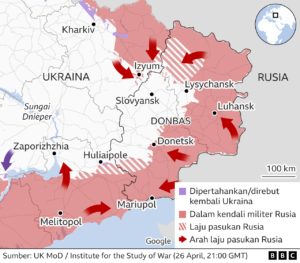
However, Ukraine is a test-case for gray zone conflict between Washington and Moscow. The importance of what happens in Ukraine is evident for the Kremlin and reflected in the advanced weaponry Russia has supplied the separatists with, including anti-tank guided weapons (ATGWs), rocket propelled grenade (RPG) launchers, anti-aircraft guns, and man portable air defense systems (MANPADs). Moscow has also resupplied the separatists with ammunition and provided additional manpower.
The Russian private military company Wagner Group has also deployed to support Moscow’s operation in eastern Ukraine, although Russia denies any hands-on involvement, alluding only to Russian citizens fighting in Ukraine as “volunteers.” The Wagner Group is a Russian private military company (PMC) created in 2014 by Yevgeny Prigozhin, an oligarch with close ties to Vladimir Putin. Prigozhin, also known as Putin’s chef because of a lucrative catering business that satiated Putin’s tastes, has long served as a Russian proxy to help Moscow achieve its national security objectives. Prigozhin was indicted by the U.S. Department of Justice for his role in running a so-called troll factory on behalf of the Russian Federation’s Internet Research Agency (IRA). Prigozhin’s efforts were designed to influence the 2018 US mid term elections and, for that, he was also sanctioned by the U.S. Department of the Treasury pursuant to Executive Order 13848 (an order that imposes penalties for interfering in a U.S. election). Prior to that, Prigozhin had been sanctioned for his role in the Russian war in Ukraine. Just as Prigozhin’s history is laden with subterfuge, so too are the activities of the Wagner Group.
The Wagner Group’s effectiveness has been uneven as it has deployed its fighting force, estimated to be anywhere from 1,000 to 5,000 personnel in size. Mercenaries associated with Wagner have gravitated to several countries, including at least a handful where either terrorist groups, weak governance structures, or ongoing conflict (or a combination of all three) are present, including Ukraine, Libya, Sudan, Zimbabwe, and Venezuela. It is also present in the Central African Republic (CAR) and South Africa. The Wagner Group has successfully diversified its funding streams and while partially bankrolled by Prigozhin’s close ties to the Kremlin, the group has also received foreign sources of funding.
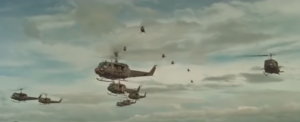
The Wagner Group’s motivations are mix of pecuniary and nationalistic. However, the motivations of its military leader, Dmitriy Utkin, are likely more complex. Utkin is a former member of Russian special forces and is also, reportedly, infatuated with Adolph Hitler and Nazi ideology. Utkin was also sanctioned by the Treasury Department in 2017 under E.O. 13660. He is said to have named the group after his favorite composer, Richard Wagner.
The Wagner Group’s sanctioning stems from its activities in Ukraine where it fought alongside an amalgamation of Russian military forces, Ukrainian separatists, and white supremacists. Ukraine is where the Wagner Group gained critical battlefield experience by supporting Russia’s annexation of Crimea in 2014. Later, the Wagner Group’s combat activities in Ukraine would become more direct in Lukansk and Donetsk.
Russia’s bellicosity
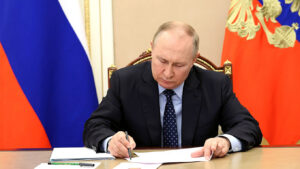
Russia’s “special military operations in Ukraine” has shown that Russia under Putin’s administration has wanted their solidity and integrity territory, because of that Russia must be shown their bellicosity if other country has tried to intervere in their homeland business.
Another Russia’s bellicosity has shown in several countries such as in Central Africa. Russia’s pre-existing influence throughout Africa has kept much of the overt political support for Ukraine at bay. Russia has been backing the Central African Republic (CAR) government against mostly Muslim rebels in the country’s northeast but Russian mercenaries have also been accused of committing multiple human rights abuses. Still, a recently released video shows a unit of soldiers from CAR with a commander flanked by a dozen soldiers stating that they were prepared to fight with Russia against “Ukrainian nationalists.” Although the video seemed highly manufactured, it was used by Moscow as propaganda and further “proof” of Russia’s global support in the war.
More generally, in the absence of international support for the invasion of Ukraine, Russia has been courting governments in Africa, including not only CAR but also Sudan, to support its invasion. One day before the invasion, a Sudanese delegation visited Russia to discuss, among other items, both countries’ “national security,” which meant Sudan’s support for Russia. CAR and Sudan both also have resource-rich mining sites, which Russia seeks to exploit in return for Russian military support. Both countries accordingly are improving relations with Moscow, despite the Kremlin’s ostracization elsewhere around the world.
The expansion of Russia’s regional reach has been a direct and indirect consequence of its military intervention on behalf of the regime of President Bashar al-Assad in Syria. The popular rebellion that erupted against Assad’s regime in February 2011 expanded into a country-wide armed rebellion that nearly defeated him in 2012 – 2013. Iran and Iranian allies such as Lebanese Hezbollah intervened with ground forces in 2013 to help stabilize Assad’s military situation, but it was Russia’s September 2015 intervention with air power that decisively turned the conflict in Assad’s favor. Russia’s objectives in intervening were primarily to protect its longtime ally in Damascus and to prevent the Islamic State, al-Qaeda, and other terrorist groups from operating freely from Syrian territory. The Russian intervention has consisted of about 3,000 – 5,000 military personnel based in two main facilities—a naval facility at Tartus, on the Mediterranean coast, from which Russia has operated for many decades, and the Basel al-Assad (BAA) airbase (referred to as Hmeymim by the Russians), in Latakia province.
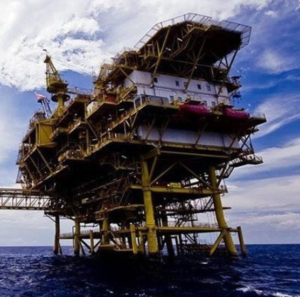
Putin, who allegedly proclaimed that ‘the breakup of the Soviet Union was the greatest geopolitical tragedy of the 20th century,’ has moved to consolidate power in Russia’s near abroad and traditional sphere of influence. Through military campaigns in Georgia (2008), Crimea (2014) and Ukraine (2014-present), Putin’s Russia has reasserted itself as regional hegemon throughout vast swaths of Central Asia, the Caucasus, and the states that comprise the former Soviet Union (FSU). In countries like Hungary in Estern Europe and and Serbia in the Balkans, Russia’s presence is felt through aggressive influence, often with the assistance of disinformation campaigns.
The end of Russia’s special military operations in Ukraine
There are many scenarios related to the end of Russia’s special military operations in Ukraine. Firstly, Russian leaders especially Vladimir Putin have threatened to escalate the conflict if the United States with several western countries such as England, Germany, Italy and France have continued their support and supplied military equipment to Ukraine. This scenario is the worst scenario because its can make many impacts such as Russia has made long-term war including their intention to attacks England and Germany also other western countries which are Russia detect as Ukraine’s symphatizers. The global world will face nuclear war and Russia’s has military capability to launch deadly nuclear attacks to their “Europe countries enemies”.
Other impacts is the European economic condition will go to wrong track and create economic recession because being admitted or not, European economic wheels have depended on Russia’s gas supply and now Russia has stopped their gas export especially to Europe country.
Russia produces 17% of all natural gas and 12% of the world’s oil. It supplies about 40% of European Union countries’ natural gas, some of which flows through pipelines that cross Ukraine. Russia’s gas conglomerate Gazprom has refused over the past several months to provide any more than the amounts specified in long term contracts, causing natural gas prices in Europe to increase significantly. Russia’s unprovoked invasion of Ukraine caused gas and oil prices to spike further; the price of crude oil initially increased to over $100 per barrel after the Russian assault began, a level not reached since 2014. In November 2021, according to the Energy Information Administration (EIA), the United States imported about 600,000 barrels per day of Russian oil.
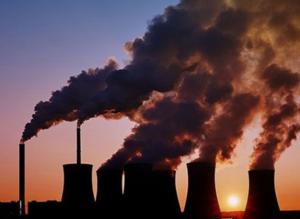
Last but not least the most worst impacts is the global communities will go to food crisis which can trigger global hunger and global uncertainty.
Secondly, Russia has attempted quick victory during their war against Ukraine. These condition can happen if the US and European countries do not support again to Ukraine. To making this conditions, Russia’s under Putin’s administration will make the US and western countries including the global community in the edge of global economic, security and politic uncertainty. Russia will give “best practice” or never forgot “lesson learned” to their enemies that if they have illwill to make Russia sorrow, uncertainty, intervere its homeland business and supporting Russia’s enemies, so Russia’s under Putin’s global intention has made their enemies taken worst-worst impacts because Russia has readied to face that.
*The writer is international issues observer. He obtained his master degree at Strategic Intelligence Assessment Study at the University of Indonesia (UI).


